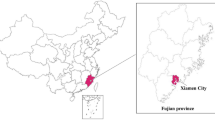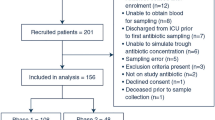Abstract
Background: A previous meta-analysis reported that 9.5% of hospitalized children suffered from an adverse drug reaction (ADR); however, reported incidences among studies varied.
Objective: To enhance the knowledge of ADRs in paediatric hospitalized patients at a global level we investigated the incidence and characteristics of ADRs in hospitalized children in European and non-European countries.
Methods: A prospective observational cohort study was conducted in academic and non-academic hospitals in five countries: Australia, Germany, Hong Kong, Malaysia and the UK. Children aged 0–18 years admitted during a 3-month period (between 1 October 2008 and 31 December 2009) were recruited. The main outcome measures were incidence, causality and outcome of ADRs.
Results: A total of 1278 patients (1340 admissions) were included [Australia n = 146 (149 admissions), Germany n = 376 (407), Hong Kong n = 143 (149), Malaysia n = 300 (314) and the UK n = 313 (321)]. The median age was 2 years (interquartile range [IQR] 0–7). Patients received a total of 5367 drugs (median 3; IQR 2–5) and median length of hospital stay was 4 days (IQR 3–7). A total of 380 ADRs were identified in 211 patients. The resultant ADR incidence of 16.5% (95% CI 14.5, 18.7) varied significantly between countries (p < 0.001). The highest incidences were observed in Malaysia and the UK. 65.3%(n = 248) of ADRs were found to be probable, and 24% of the ADRs were serious, with one being fatal.
Conclusions: By comparing data from five countries in Europe, Asia and Australia we have shown that the incidence of ADRs in hospitalized children is at least as high as incidences published in adults. However, the variation between countries was mainly due to different populations and treatment strategies. Particular attention should be given to opioid use in hospitalized children.








Similar content being viewed by others
References
Lazarous J, Pomeranz BH, Corey PN. Incidence of adverse drug reactions in hospitalised patients: a meta-analysis of prospective studies. JAMA 1998; 279: 1200–5
Classen DC, Pestotnik SL, Evans RS, et al. Adverse drug events in hospitalized patients: excess length of stay, extra costs, and attributable mortality. JAMA 1997; 277: 301–6
Pirmohamed M, James S, Meakin S, et al. Adverse drug reactions as cause of admission to hospital: prospective analysis of 18 820 patients. BMJ 2004; 329: 15–9
Impicciatore P, Choonara I, Clarkson A, et al. Incidence of adverse drug reactions in paediatric in/out-patients: a systematic review and meta-analysis of prospective studies. Br J Clin Pharmacol 2001; 52: 77–83
Kearns GL, Abdel-Rahman DM, Alander SW, et al. Developmental pharmacology: drug disposition, action, and therapy in infants and children. N Engl J Med 2003; 349(12): 1157–67
Neubert A, Dormann H, Weiss J, et al. The impact of unlicensed and off-label drug use on adverse drug reactions in paediatric patients. Drug Saf 2004; 27: 1059–67
Turner S, Nunn AJ, Fielding K, et al. Adverse drug reactions to unlicensed and off-label drugs on paediatric wards: a prospective study. Acta Paediatr 1999; 88: 965–8
Clavenna A, Bonati M. Adverse drug reactions in childhood: a review of prospective studies and safety alerts. Arch Dis Child 2009; 94: 724–8
Haffner S, von Laue N, Wirth S, et al. Detecting adverse drug reactions on paediatric wards: intensified surveillance versus computerised screening of laboratory values. Drug Saf 2005; 28: 453–64
Thurmann PA. Methods and systems to detect adverse drug reactions in hospitals. Drug Saf 2001; 24: 961–8
Choonara IA, Harris F. Adverse drug reactions in medical inpatients. Arch Dis Child 1984; 59: 578–80
Gill AM, Leach HJ, Hughes J, et al. Adverse drug reactions in a paediatric intensive care unit. Acta Paediatr 1995; 84: 438–41
Martinez-Mir I, Garcia-Lopez M, Palop V, et al. A prospective study of adverse drug reactions in hospitalized children. Br J Clin Pharmacol 1999; 47: 681–8
Neubert A, Dormann H, Weiss J, et al. Are computerised monitoring systems of value to improve pharmacovigilance in paediatric patients? Eur J Clin Pharmacol 2006; 62: 959–65
Gonzalez-Martin G, Caroca CM, Paris E. Adverse drug reactions (ADRs) in hospitalized pediatric patients: a prospective study. Int J Clin Pharmacol Ther 1998; 36: 530–3
ADVISE (Adverse Drug Reactions in Children — International Surveillance and Evaluation) [online]. Available from URL: www.paediatric-adr.com [Accessed 2012 Mar 12]
WHO Collaborating Centre for Drug Statistics Methodology. ATC/DDD Index 2012 [online]. Available from URL: http://www.whocc.no/atc_ddd_index/ [Accessed 2012 Mar 30]
World Health Organization. International classification of diseases version 10 [online]. Available from URL: http://www.who.int/classifications/icd/en/ [Accessed 2012 Mar 30]
The WHO adverse reaction terminology: terminology for coding clinical information in relation to drug therapy [online]. Available from URL: http://www.umc-products.com/graphics/3036.pdf [Accessed 2012 Mar 30]
Weiss J, Krebs S, Hoffmann C, et al. Survey of adverse drug reactions on a pediatric ward: a strategy for early and detailed detection. Pediatrics 2002; 110: 254–7
Murff HJ, Patel VL, Hripcsak G, et al. Detecting adverse events for patient safety research: a review of current methodologies. J Biomed Inform 2003; 36: 131–43
Neubert A, Rascher W. Adverse drug reactions in children: identification and evaluation. Monatsschr Kinderheilkd 2007; 155: 700–8
WHO technical report no. 498. International drug monitoring: the role of national centres [online]. Available from URL: http://www.who-umc.org/graphics/24756.pdf [Accessed 2012 Mar 30]
Naranjo CA, Busto U, Sellers EM, et al. A method for estimating the probability of adverse drug reactions. Clin Pharmacol Ther 1981; 30: 239–45
Dormann H, Muth-Selbach U, Kerbs S, et al. Incidence and costs of adverse drug reactions during hospitalisation: computerised monitoring versus stimulated spontaneous reporting. Drug Saf 2000; 22(2): 161–8
European Medicines Agency. ICH Topic E 2 A. Clinical safety data management: definitions and standards for expedited reporting. CPMP/ICH/377/95 [online]. Available from URL: http://www.ema.europa.eu/docs/en_GB/document_library/Scientific_guideline/2009/09/WC500002749.pdf [Accessed 2012 Mar 30]
Schumock GT, Thornton JP. Focusing on the preventability of adverse drug reactions [letter]. Hosp Pharm 1992; 27: 538
Landis JR, Koch GG. The measurement of observer agreement for categorical data. Biometrics 1977; 33: 159–74
Neubert A, Verhamme K, Murray ML, et al. The prescribing of analgesics and non-steroidal anti-inflammatory drugs in paediatric primary care in the UK, Italy and the Netherlands. Pharmacol Res 2010; 62: 243–8
Lasky T, Ernst FR, Greenspan J, et al. Estimating pediatric inpatient medication use in the United States. Pharma-coepidemiol Drug Saf 2011; 20: 76–82
Temple ME, Robinson RF, Miller JC, et al. Frequency and preventability of adverse drug reactions in paediatric patients. Drug Saf 2004; 27: 819–29
McDonnell C. Opioid medication errors in pediatric practice: four years’ experience of voluntary safety reporting. Pain Res Manag 2011; 16(2): 93–8
Jarernsiripornkul N, Krska J, Capps PA, et al. Patient reporting of potential adverse drug reactions: a methodological study. Br J Clin Pharmacol 2002; 53: 318–25
Easton KL, Parsons BJ, Starr M, et al. The incidence of drug-related problems as a cause of hospital admissions in children. Med J Aust 1998; 169: 356–9
Dunn KL, Reddy P, Moulden A, et al. Medical record review of deaths, unexpected intensive care unit admissions, and clinician referrals: detection of adverse events and insight into the system. Arch Dis Child 2006; 91: 169–72
Runciman WB, Roughead EE, Semple SJ, et al. Adverse drug events and medication errors in Australia. Int J Qual Health Care 2003; 15 Suppl. 1: i49–59
Fattahi F, Pourpak Z, Moin M, et al. Adverse drug reactions in hospitalized children in a department of infectious diseases. J Clin Pharmacol 2005; 45: 1313–8
Davies EC, Green CF, Mottram DR, et al. Adverse drug reactions in hospital in-patients: a pilot study. J Clin Phar Ther 2006; 31: 335–41
Davies EC, Green CF, Taylor S, et al. Adverse drug reactions in hospital in-patients: a prospective analysis of 3695 patient-episodes. PLoS One 2009; 4: e4439
Sanchez Munoz-Torrero JF, Barguilla P, Velasco R, et al. Adverse drug reactions in internal medicine units and associated risk factors. Eur J Clin Pharmacol 2010; 66: 1257–64
Zopf Z, Rabe C, Neubert A, et al. Women encounter ADRs more often than do men. Eur J Clin Pharmacol 2008; 64: 999–1004
Dormann H, Criegee-Rieck M, Neubert A, et al. Lack of awareness of community-acquired adverse drug reactions upon hospital admission: dimensions and consequences of a dilemma. Drug Saf 2003; 26: 353–62
van der Hooft CS, Sturkenboom MC, van Grootheest K, et al. Adverse drug reaction-related hospitalisations: a nationwide study in The Netherlands. Drug Saf 2006; 29: 161–8
Buajordet I, Wesenberg F, Brors O, et al. Adverse drug events in children during hospitalization and after discharge in a Norwegian university hospital. Acta Paediatr 2002; 91: 88–94
Clarkson A, Choonara I. Surveillance for fatal suspected adverse drug reactions in the UK. Arch Dis Child 2002; 87: 462–6
Acknowledgements
The authors wish to thank the paediatric medical ward staff in the hospitals in the five countries that participated in this study. In addition, we wish to thank Professor Stephen Evans for his statistical advice, Ann-Kathrin Schramm (Germany), Dr Norrashidah Bt Abdul Wahab (Malaysia), Dr Valerie Sung (Australia) and Tsui Ha Chan (Hong Kong) for their help with the data collection, Dr Lynda Wilton for reviewing the manuscript and Ben Cross for developing the database.
Antje Neubert and Ian C.K. Wong created the idea of the study. Ian C.K. Wong revised the methodology and supervised the study. Antje Neubert was the chief investigator of the study and supervised the analysis and data collection. Asia N. Rashed was responsible for the management and analysis of the data from all sites, data collection in the UK and input the data into the database. Noel Cranswick, Wolfgang Rascher, Stephen Tomlin, Kenneth Lee and Siew Siang Chua were responsible for study implementation and data collection in their sites. Asia N. Rashed, Barbara Hefele, John Jackman, Kam-Lun Hon, Jeffrey Ong, Maisoon Ghaleb, Noel Cranswick, Wolfgang Rascher, Stephen Tomlin, Kenneth Lee, Tea Ming Hui and Siew Siang Chua were responsible for data assessment. Asia N. Rashed produced the first draft of the manuscript and all authors approved the final draft.
Asia N. Rashed was funded by the Yamani Cultural and Charitable Foundation, London, UK. The study in Germany was funded in part by the ELAN (Erlanger Leistungsbezogene Anschubfinanzierung und Nachwuchsförderung) funds of the Medical Faculty of the Friedrich Alexander University, Erlangen-Nuremberg, Germany. Kam-Lun Hon has received travel support from Pfizer, Wyeth, GlaxoSmithKline and Leo Pharma. All other authors have declared that they have no financial interests that may be relevant to the submitted work.
Author information
Authors and Affiliations
Corresponding author
Rights and permissions
About this article
Cite this article
Rashed, A.N., Wong, I.C.K., Cranswick, N. et al. Adverse Drug Reactions in Children — International Surveillance and Evaluation (ADVISE). Drug Saf 35, 481–494 (2012). https://doi.org/10.2165/11597920-000000000-00000
Published:
Issue Date:
DOI: https://doi.org/10.2165/11597920-000000000-00000




